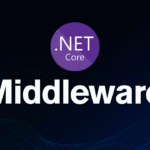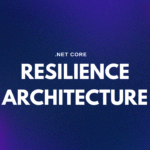ChatGPT: An Advanced Conversational AI
ChatGPT is an advanced conversational AI model developed by OpenAI. It interacts in a conversational manner, allowing users to ask questions, get answers, and engage in meaningful dialogue. ChatGPT can assist with a variety of tasks, including writing, brainstorming, learning, and more.
Key Features of ChatGPT
Some key features of ChatGPT include:
- Natural Language Understanding: It can comprehend and respond to complex language inputs.
- Versatility: It can help with coding, writing essays, planning events, and even providing fun facts.
- Interactive Dialogue: It can answer follow-up questions, admit mistakes, and reject inappropriate requests.
ChatGPT is designed to be user-friendly and accessible, making it a valuable tool for productivity and creativity.
Code-Behind and Development: The Technologies That Power ChatGPT
The development and training of models like ChatGPT generally involve a combination of several programming languages and technologies. Here’s a breakdown of the most used ones:
- Python: The primary programming language used for machine learning and artificial intelligence development, including Natural Language Processing (NLP). It uses rich libraries like TensorFlow, PyTorch, and Hugging Face’s Transformers for training models.
- C++: Often used for performance-critical parts of the system and optimizing low-level operations like matrix multiplications. Many machine learning frameworks have C++ backends for speed.
- CUDA (Compute Unified Device Architecture): A parallel computing platform used for GPU acceleration. It is heavily used to speed up the massive computational power required for training large models.
- JavaScript/Node.js: Used for building web interfaces, APIs, and other tools that interact with machine learning models when deployed in applications or websites.
- SQL/NoSQL Databases: Used for handling and storing the large datasets of text data required for training.
- Shell scripting (Bash): Used for automating tasks in server environments and orchestrating processes during training and deployment.
- Hadoop & Spark: Frameworks for distributed computing, useful for processing massive amounts of data across clusters.
In short, Python is the main language for building and training models, while other technologies support various aspects of development, deployment, and performance.
End-to-End Process of ChatGPT
The process behind how ChatGPT learns, processes data, and generates responses involves several complex stages:
Data Collection and Preprocessing
- Data Gathering: A large and diverse dataset of text (books, articles, websites, etc.) is collected.
- Cleaning the Data: Irrelevant or harmful content is removed, and the data is formatted.
- Tokenization: The text is broken down into smaller units (tokens) to help the model better understand and process language.
Training the Model
The core learning process:
- Supervised Learning: The model is initially trained on input-output examples.
- Unsupervised Learning: The model predicts the next word in a sequence on vast amounts of text, learning grammar and structure.
- Fine-tuning: The model is fine-tuned to be more helpful and safe using specific datasets.
- Reinforcement Learning from Human Feedback (RLHF): Human reviewers rate responses for quality and safety, which is used to adjust and improve the model’s behavior.
Model Architecture and Learning
ChatGPT is based on a transformer architecture:
- Attention Mechanism: This allows the model to focus on different parts of the input sequence (the prompt) when generating a response, considering relationships between words across the entire text.
- Layers: The model has many layers that process the input step by step, building complex representations of language.
- Contextual Understanding: The transformer model can remember context over longer stretches of text, allowing it to respond to complex prompts.
Generating Responses
When you input a prompt:
- Input Processing: Your prompt is tokenized and processed through the transformer network.
- Contextual Prediction: The model predicts the next token one at a time, based on what it has learned from its training data.
- Probability Distribution: The model chooses the most probable word or token at each step to build a coherent response.
Post-Processing
- Text Formatting: The response is cleaned up for readability (e.g., fixing punctuation).
- Safety Filters: Checks are performed to ensure the output doesn’t contain harmful content, misinformation, or unsafe material.
User Interaction and Feedback
- Prompt Interpretation: The model uses context and patterns to understand the meaning of your prompt.
- Adaptive Behavior: The model maintains context during an ongoing session to respond appropriately to follow-up questions.
- Feedback and Iteration: User ratings and feedback guide continuous fine-tuning and updates to make the model safer and more accurate.
Benefits and Drawbacks of Using ChatGPT
ChatGPT offers a wide range of benefits, but like any technology, it comes with potential risks and drawbacks.
Benefits for People with ChatGPT
ChatGPT is a versatile tool that offers significant advantages across various domains:
1. Instant Access to Information
- Quick Answers: Get immediate responses on a wide array of topics.
- Problem Solving: Receive step-by-step guidance on troubleshooting or learning new concepts.
2. Learning and Education
- Personalized Learning: Get explanations tailored to your level of understanding.
- Homework Help: Assistance with assignments, research, and understanding difficult subjects.
- Language Learning: Help with translation, grammar, and language practice.
3. Writing Assistance and Creativity
- Content Generation: Help generate ideas, outline articles, and write blog posts, improving productivity.
- Editing & Proofreading: Suggestions for writing improvements and fixing grammar mistakes.
- Enhanced Creativity: Brainstorming ideas for writing, music, art, and more.
4. Timesaving and Convenience
- Task Automation: Automate simple tasks like drafting emails or reports.
- 24/7 Availability: Access the tool anytime, without the limitations of human experts.
- Assistive Technology: A tool for communication and understanding for people with disabilities.
5. Professional Use
- Customer Support: Powering chatbots for quick customer query responses.
- Data Analysis and Reporting: Assistance in generating business reports and summarizing data.
Drawbacks with ChatGPT
There are also potential losses or drawbacks associated with heavy reliance on this technology:
1. Dependence and Cognitive Loss
- Over-Reliance: Heavy reliance may reduce independent critical thinking and problem-solving skills.
- Loss of Cognitive Skills: Using AI for tasks may lead to a decline in skills like writing proficiency or memory retention.
2. Misinformation and Accuracy
- Errors and Misleading Information: The model can sometimes provide incorrect, outdated, or misleading information.
- Over-Simplification: Complex topics might be oversimplified, leading to misunderstandings, especially in critical fields like medicine or law.
3. Loss of Human Connection
- Decreased Human Interaction: Cannot replace the depth of human empathy or emotional connection, potentially leading to feelings of isolation.
- Impersonal Responses: Lacks the nuance and personal touch of real human interactions.
4. Ethical and Data Concerns
- Data Privacy: Interacting involves sharing information, raising concerns about data storage and ownership.
- Biases in AI: Biases present in the training data can be reflected in the model’s responses, reinforcing stereotypes.
- Manipulation and Deception: Risk of misuse for spreading misinformation or creating deepfakes.
5. Job and Economic Risks
- Job Displacement: Certain knowledge-based jobs are at risk of automation as AI capabilities grow.
- Economic Inequality: People without access to advanced technologies may fall behind in job and education opportunities.
References:
- Online Websites
- ChatGPT Official Website
- Wikipedia
- Blogs
Thanks for reading








